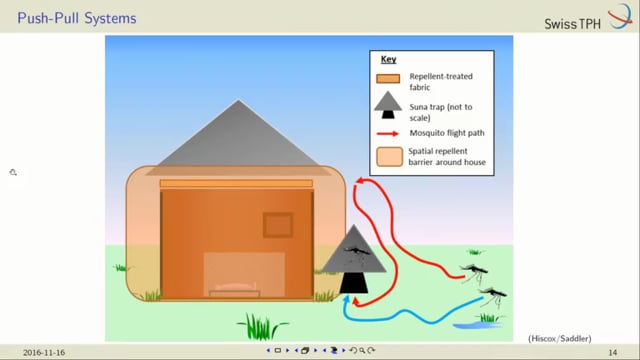Last Updated: 27/05/2025
The impact of novel vector control tools on asymptomatic Plasmodium falciparum infection prevalence and transmission potential
Objectives
Overall the proposal sets to study the impact of spatial repellents on asymptomatic P. falciparum prevalence. Specific objectives are to:
- Quantify reductions in asymptomatic prevalence after the introduction of spatial repellents.
- Compare mosquito-to- human and human-to-mosquito transmission in intervention and control clusters.
Malaria is a major cause of morbidity and mortality in many countries in the tropics and subtropics. Most malaria programs focus on diagnosis and treatment of clinical infections and blanket vector control through bed net distributions. This strategy does not adequately target the asymptomatic reservoir, which is the source of up to 95% of malaria transmission. There is a lack of understanding of the ability of many current and new malaria control tools to shrink the asymptomatic reservoir because many studies evaluating interventions focus on clinical incidence as the main outcome. Spatial repellents are a novel tool for malaria control. They release volatile compounds that drive away mosquitos from houses. Spatial repellents might reduce clinical incidence by up to 50%. Their impact on the prevalence of asymptomatic infections has not been systematically studied. The ability of spatial repellents to reduce clinical incidence is currently being field-tested in a funded large-scale cluster randomized trial in western Kenya. Preliminary data shows that nearly half of all individuals in the study site carried asymptomatic malaria infections at baseline. Given the importance of these infections as a source of transmission, there is a need to understand whether spatial repellents can also reduce this reservoir in order to assess their full potential to combat malaria. 9000 blood samples will be screened currently being collected for P. falciparum infections by qPCR and microscopy. This prkect will also quantify gametocytes and compare parasite and gametocyte prevalence and density to vector density, sporozoite rate, and entomological inoculation rate (EIR) at different time points before and after blood sample collections. The outcomes of the proposed research include: 1) Knowledge of the potential of spatial repellents to reduce asymptomatic prevalence, and 2) an understanding of the changes in mosquito-to-human and human- to-mosquito transmission after introduction of spatial repellents. Data on the relationships between parasitological and entomological measures of transmission intensity, collected in 20 clusters at three timepoints, will enable a better understanding on the impact of malaria control beyond the use of spatial repellents. This work aims to accelerate malaria elimination, and thus to improve the lives of people living in malaria-endemic countries.
Jun 2024 — Apr 2026
$211,275


